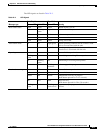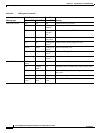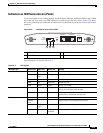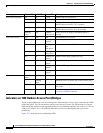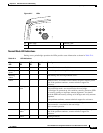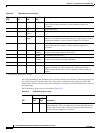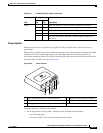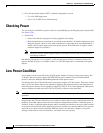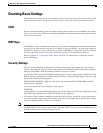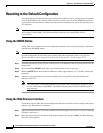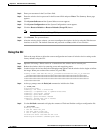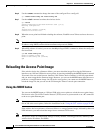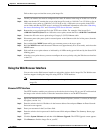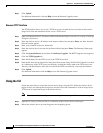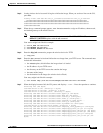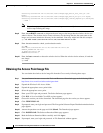
22-15
Cisco IOS Software Configuration Guide for Cisco Aironet Access Points
OL-11350-01
Chapter 22 Wireless Device Troubleshooting
Checking Basic Settings
Checking Basic Settings
Mismatched basic settings are the most common causes of lost connectivity with wireless clients. If the
wireless device does not communicate with client devices, check the areas described in this section.
SSID
Wireless clients attempting to associate with the wireless device must use the same SSID as the wireless
device. If a client device’s SSID does not match the SSID of an wireless device in radio range, the client
device will not associate.
WEP Keys
The WEP key you use to transmit data must be set up exactly the same on the wireless device and any
wireless devices with which it associates. For example, if you set WEP Key 3 on your client adapter to
0987654321 and select it as the transmit key, you must set WEP Key 3 on the wireless device to exactly
the same value. The wireless device does not need to use Key 3 as its transmit key, however.
Refer to Chapter 10, “Configuring Cipher Suites and WEP,” for instructions on setting the wireless
device’s WEP keys.
Security Settings
Wireless clients attempting to authenticate with the wireless device must support the same security
options configured in the wireless device, such as EAP or LEAP, MAC address authentication, Message
Integrity Check (MIC), WEP key hashing, and 802.1X protocol versions.
If your radio clients are using EAP-FAST authentication, you must configure open authentication with
EAP. If you do not configure open authentication with EAP, a warning message appears. If you are using
the CLI. the following warning appears:
SSID CONFIG WARNING: [SSID]: If radio clients are using EAP-FAST, AUTH OPEN with EAP
should also be configured.
If you are using the GUI, this warning message appears:
WA RN ING:
“Network EAP is used for LEAP authentication only. If radio clients are configured to authenticate using
EAP-FAST, Open Authentication with EAP should also be configured.”
If a wireless client is unable to authenticate with the wireless device, contact the system administrator
for proper security settings in the client adapter and for the client adapter driver and firmware versions
that are compatible with the wireless device settings.
Note The wireless device MAC address that appears on the Status page in the Aironet Client Utility (ACU) is
the MAC address for the wireless device radio. The MAC address for the access point Ethernet port is
printed on the label on the back of the access point.



